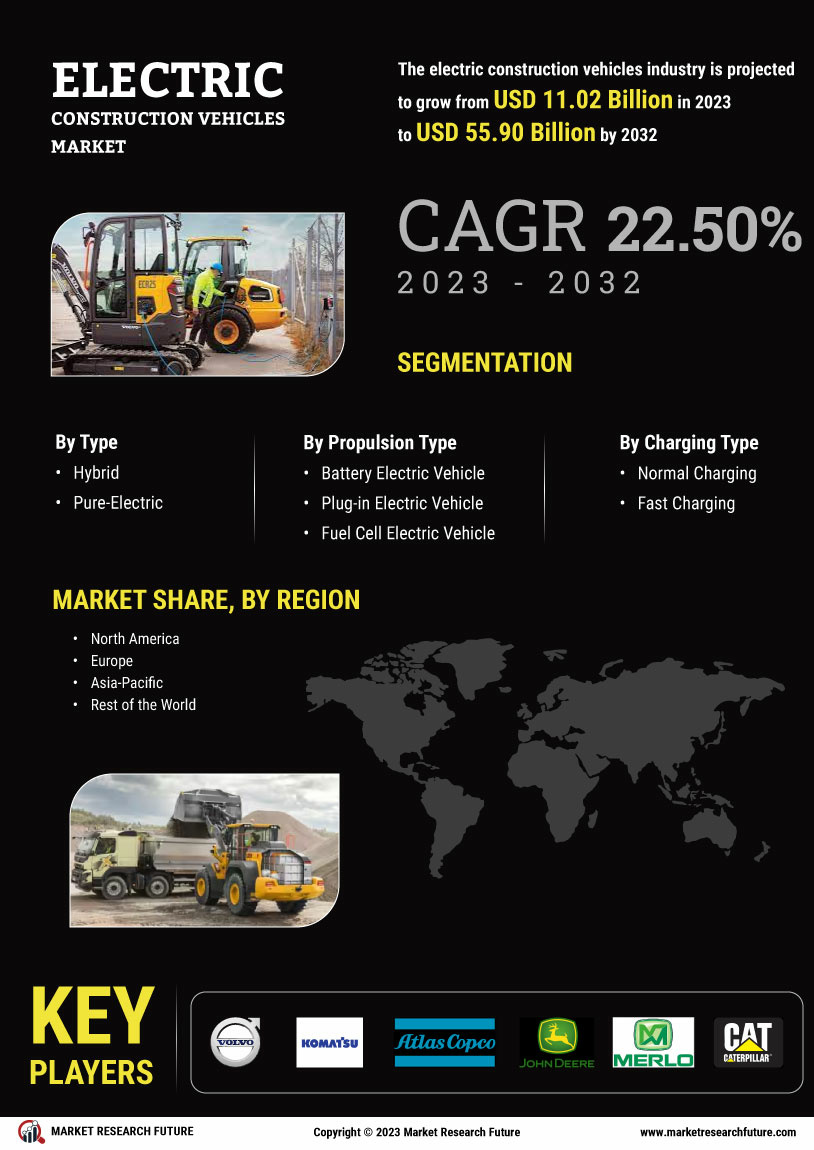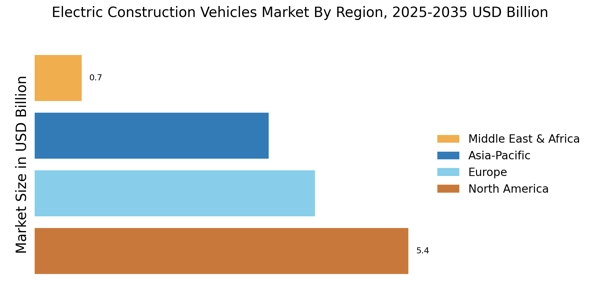Government Incentives and Regulations
The Electric Construction Vehicles Market is significantly influenced by government incentives and regulatory frameworks aimed at promoting electric vehicle adoption. Many governments are implementing policies that encourage the use of electric construction vehicles through tax credits, grants, and subsidies. These initiatives are designed to offset the higher initial costs associated with electric vehicles compared to traditional options. Additionally, stricter emissions regulations are compelling construction firms to transition to cleaner technologies. For example, some regions have set ambitious targets for reducing greenhouse gas emissions, which necessitates the adoption of electric vehicles in construction fleets. As a result, the regulatory landscape is becoming increasingly favorable for electric construction vehicles, further propelling market growth.
Cost Efficiency and Operational Savings
Cost efficiency is becoming a crucial driver in the Electric Construction Vehicles Market. While the initial investment in electric construction vehicles may be higher than that of traditional vehicles, the long-term operational savings are substantial. Electric vehicles typically have lower maintenance costs due to fewer moving parts and reduced wear and tear. Additionally, the cost of electricity is often lower than diesel fuel, leading to significant savings in fuel expenses over time. As construction companies increasingly focus on their bottom lines, the financial benefits of transitioning to electric vehicles become more apparent. This economic rationale is likely to encourage more firms to invest in electric construction vehicles, thereby contributing to the overall growth of the market.
Rising Demand for Sustainable Solutions
The Electric Construction Vehicles Market is experiencing a notable surge in demand for sustainable construction solutions. As environmental concerns intensify, construction companies are increasingly seeking to reduce their carbon footprints. Electric construction vehicles, which produce zero emissions during operation, align with these sustainability goals. According to recent data, the market for electric construction vehicles is projected to grow at a compound annual growth rate of over 20% in the coming years. This growth is driven by the need for cleaner alternatives to traditional diesel-powered machinery, which are often criticized for their environmental impact. Consequently, the shift towards electric vehicles is not merely a trend but a fundamental change in the construction landscape, indicating a long-term commitment to sustainability within the industry.
Technological Innovations in Electric Vehicles
Technological advancements play a pivotal role in the Electric Construction Vehicles Market. Innovations in battery technology, electric drivetrains, and automation are enhancing the performance and efficiency of electric construction vehicles. For instance, the introduction of advanced lithium-ion batteries has significantly improved the range and charging times of these vehicles, making them more viable for construction applications. Furthermore, the integration of smart technologies, such as telematics and IoT, allows for real-time monitoring and management of vehicle performance. This not only optimizes operational efficiency but also reduces maintenance costs. As these technologies continue to evolve, they are likely to attract more construction companies to adopt electric vehicles, thereby accelerating market growth.
Increasing Urbanization and Infrastructure Development
The Electric Construction Vehicles Market is also benefiting from the rapid urbanization and infrastructure development occurring in various regions. As urban populations grow, there is a pressing need for new infrastructure, including roads, bridges, and buildings. Electric construction vehicles are well-suited for these projects due to their efficiency and reduced environmental impact. The demand for electric vehicles is expected to rise as construction companies seek to meet the needs of urban development while adhering to sustainability goals. Furthermore, the global push for smart cities is likely to drive the adoption of electric construction vehicles, as these vehicles align with the vision of creating environmentally friendly urban environments. This trend suggests a robust future for the electric construction vehicle market.


















Leave a Comment